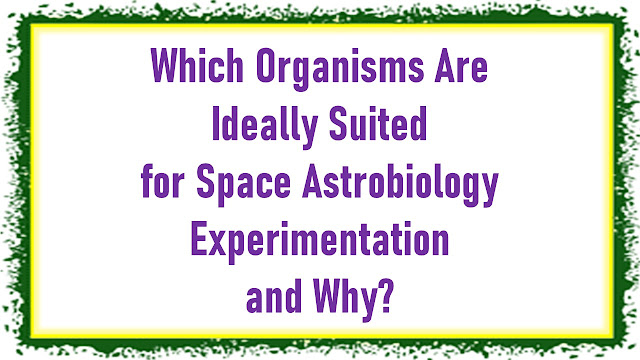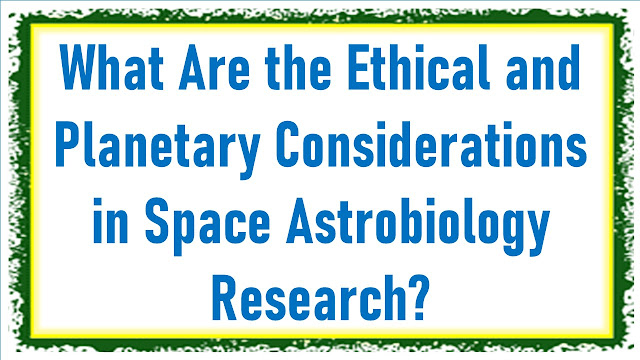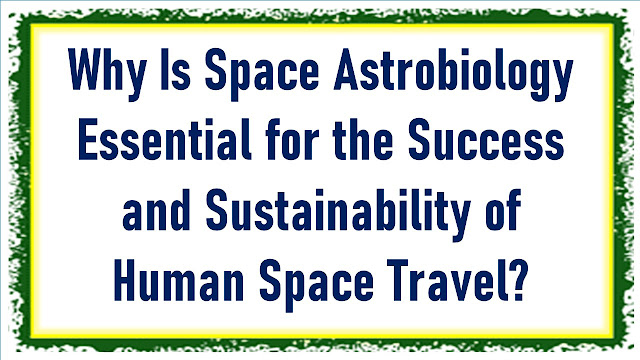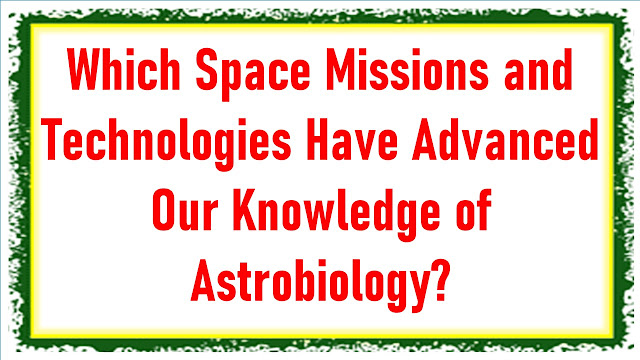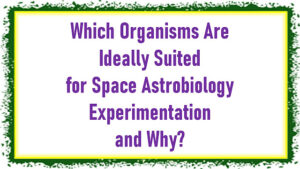
Introduction.
In this article, I’ll delve into the captivating realm of space astrobiology experimentation, a field that seeks to unlock the mysteries of life beyond our planet. The cosmos, with its vast expanse and extreme conditions, presents a unique opportunity to study the adaptability and resilience of various organisms, providing valuable insights into the potential for extraterrestrial life. Identifying which organisms are ideally suited for such experiments is a crucial undertaking, as it not only informs our understanding of life’s potential beyond Earth but also contributes to the development of future space exploration missions and the search for habitable environments.
To embark on this exploration, we’ll explore the characteristics and capabilities that make certain organisms prime candidates for space astrobiology research. From extremophiles thriving in the harshest conditions on Earth to microorganisms with remarkable survival mechanisms, the selection of these organisms is grounded in their ability to withstand the rigors of space travel and endure the challenging conditions of other celestial bodies. Join me as we unravel the fascinating world of space astrobiology and shed light on the organisms that may hold the key to unraveling the mysteries of life in the cosmos.
- Microorganisms: Resilient, adaptability, potential for extraterrestrial life studies.
- Extremophiles: Survive extreme conditions, analogs for extraterrestrial environments.
- Model Organisms: Genetic tractability, well-understood biology, ease of experimentation.
- Lichens: Symbiotic, robust, ecological relevance in space astrobiology research.
- Tardigrades: Cryptobiotic abilities, withstand harsh space conditions, fundamental biology.
- Cyanobacteria: Photosynthesis, oxygen production, potential for life support systems.
Microorganisms: Resilient, adaptability, potential for extraterrestrial life studies.
Microorganisms, such as bacteria and archaea, are among the most suitable organisms for space astrobiology experimentation for several compelling reasons. Firstly, their remarkable resilience allows them to endure extreme conditions, including the harsh radiation, extreme temperatures, and vacuum of space. This resilience is vital for their survival in the unforgiving space environment, making them ideal candidates for studying how life can persist beyond Earth.
Secondly, microorganisms possess a high degree of adaptability. They can quickly evolve and adjust to changing conditions, which is essential for life to thrive in diverse extraterrestrial environments. Understanding how microorganisms adapt to space conditions can provide insights into the potential for extraterrestrial life forms to evolve and persist on other celestial bodies, such as Mars or Europa.
Additionally, microorganisms serve as valuable model organisms for astrobiology research due to their relatively simple biology and short generation times. This simplicity allows scientists to study their responses to space conditions more comprehensively. Furthermore, microorganisms are highly versatile and can be engineered for specific experiments, making them powerful tools for investigating the potential habitability of other planets and the origins of life in the universe.
Extremophiles: Survive extreme conditions, analogs for extraterrestrial environments.
Extremophiles, organisms adapted to thrive in extreme environments on Earth, are excellent candidates for space astrobiology experiments. Their ability to survive and even thrive in conditions that mimic those found on other celestial bodies makes them highly relevant for understanding the potential for life beyond our planet.
One of the key advantages of extremophiles is their capacity to endure extreme conditions, including extreme temperatures, acidic or alkaline environments, high radiation, and high-pressure settings. These extreme conditions often closely resemble the hostile environments found on celestial bodies like Europa, with its subsurface oceans, or the surface of Mars, known for its extreme cold and radiation exposure. By studying extremophiles in space, scientists can gain valuable insights into how life might adapt and persist in extraterrestrial environments.
Extremophiles also serve as analogs for potential extraterrestrial life forms. By examining their biochemistry, metabolism, and genetic adaptations, researchers can make educated hypotheses about the types of organisms that might exist on other planets or moons. This helps in designing experiments and instruments for future space missions to search for signs of life.
Model Organisms: Genetic tractability, well-understood biology, ease of experimentation.
Model organisms, often used in laboratory research, are highly suited for space astrobiology experiments because of their genetic tractability, well-understood biology, and ease of experimentation. These organisms, such as fruit flies (Drosophila melanogaster) and nematode worms (Caenorhabditis elegans), offer several advantages for studying the effects of space conditions on living organisms.
One of the primary advantages of model organisms is their well-characterized genetics. Scientists have extensive knowledge of their genetic makeup, making it easier to study how space conditions affect various aspects of their biology. This genetic tractability allows researchers to pinpoint specific genetic changes or adaptations that occur in response to space radiation, microgravity, or other extraterrestrial factors.
Furthermore, the well-understood biology of model organisms enables scientists to design precise experiments and measure outcomes accurately. This level of control is crucial for gaining insights into the impact of space conditions on living organisms, including changes in development, behavior, and physiology.
Lichens: Symbiotic, robust, ecological relevance in space astrobiology research.
Lichens, which are symbiotic associations of fungi and photosynthetic microorganisms like algae or cyanobacteria, are well-suited for space astrobiology research due to their unique characteristics. One of the primary advantages of lichens is their robustness and resilience. They can endure extreme environmental conditions, including desiccation, extreme temperatures, and radiation, which are akin to the challenges faced in space.
The symbiotic nature of lichens is particularly relevant to astrobiology. This dual organism system allows researchers to study the interactions between different types of microorganisms in a controlled environment, providing insights into how such symbioses might function on other celestial bodies. Lichens’ ability to photosynthesize and potentially produce oxygen is also essential in considering their potential role in supporting human life during long-duration space missions.
Moreover, lichens have ecological relevance in space astrobiology research. They are pioneers in colonizing barren or inhospitable environments, making them important models for studying the early stages of ecosystem development on other planets or moons. By investigating lichens’ response to space conditions, scientists can gain valuable information about the feasibility of establishing extraterrestrial ecosystems.
Tardigrades: Cryptobiotic abilities, withstand harsh space conditions, fundamental biology.
Tardigrades, also known as water bears, are microscopic, multicellular organisms known for their extraordinary resilience to extreme conditions, including those encountered in space. Their unique cryptobiotic abilities, such as desiccation tolerance and the ability to survive extreme temperatures, make them ideal subjects for space astrobiology experiments.
One of the most remarkable features of tardigrades is their ability to enter a cryptobiotic state, during which they can withstand extreme conditions that would be lethal to most other organisms. In this state, tardigrades can survive exposure to the vacuum of space, extreme radiation, and temperature fluctuations. Studying the genetic and physiological mechanisms behind these abilities can provide insights into the potential for life to exist and persist on other celestial bodies.
Tardigrades also have fundamental biological characteristics that make them valuable for space research. They are multicellular, allowing for the study of complex organisms in space conditions, and their small size makes them convenient for experiments on spacecraft. Additionally, their genetic makeup is relatively well-understood, which facilitates investigations into the genetic adaptations that enable their survival in space.
Cyanobacteria: Photosynthesis, oxygen production, potential for life support systems.
Cyanobacteria, a group of photosynthetic microorganisms, offer unique advantages for space astrobiology experiments, primarily due to their ability to photosynthesize and produce oxygen. These abilities make them valuable for both understanding extraterrestrial life potential and exploring the development of life support systems in space.
The capacity of cyanobacteria to photosynthesize allows them to harness energy from sunlight, a crucial adaptation for potential extraterrestrial habitats with access to light. Studying how cyanobacteria thrive in space conditions can provide insights into the role of photosynthesis in supporting life on other celestial bodies.
Furthermore, cyanobacteria are oxygen producers. This feature has significant implications for long-duration space missions, where oxygen production is essential for sustaining human life. By cultivating cyanobacteria in space, researchers can assess their efficiency in generating oxygen and explore their potential integration into life support systems for future space exploration.
Conclusion.
I hope this exploration of the ideal organisms for space astrobiology experimentation has shed light on the crucial considerations in selecting candidates for such missions. In conclusion, it is evident that extremophiles, particularly those thriving in extreme conditions on Earth, stand as prime candidates for space experiments. Their resilience, adaptability, and potential to offer insights into the limits of life make them invaluable subjects.
Furthermore, microorganisms like bacteria and archaea, as well as simple eukaryotic organisms, present numerous advantages for space astrobiology studies. Their small size, rapid reproduction rates, and the wealth of genetic information available about them facilitate experimentation and data analysis in the challenging space environment. These organisms hold the promise of unlocking profound revelations about the possibilities of life beyond Earth and the potential habitability of distant celestial bodies. Thus, by focusing on extremophiles and microorganisms, we can maximize the scientific yield and success of space astrobiology missions, bringing us closer to unraveling the mysteries of the cosmos.






